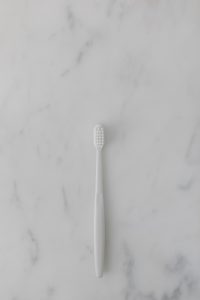 Regular maintenance and cleaning are important for the durability and aesthetics of marble surfaces, requiring proper cleaning products, stain preventers, protective measures, and periodic maintenance.
Regular maintenance and cleaning are important for the durability and aesthetics of marble surfaces, requiring proper cleaning products, stain preventers, protective measures, and periodic maintenance.
Marble is a natural stone material that is a popular and stylish choice for decoration, flooring, and building materials in homes and businesses. The durability and aesthetics of marble make it attractive to architects, designers, and homeowners. However, it is important to apply proper care and cleaning methods to maintain the beauty and durability of marble. This article provides tips and recommendations for marble maintenance and cleaning.
Regular Cleaning
Marble surfaces require regular cleaning. Removing dust and dirt helps to maintain the marble’s shiny appearance and durability. Marble surfaces should be regularly wiped with a damp microfiber cloth or a soft brush. Using non-abrasive cleaners, the surfaces should be cleaned weekly or as needed.
Regular cleaning is an important factor in extending the life of marble surfaces, as well as preserving their natural beauty. The frequency of cleaning may vary depending on the usage area and the amount of dirt the marble surface is exposed to. Especially in heavily used areas, planning more thorough cleaning procedures in addition to daily cleaning routines can be beneficial.
Using the Right Cleaning Products
When cleaning marble surfaces, you should avoid acidic or abrasive cleaners. These can cause scratches, stains, and dullness on the marble surface. Instead, cleaners specifically formulated for marble, with a neutral pH, should be used to clean the surface.
Choosing natural cleaning products greatly affects the lifespan and appearance of marble surfaces. Along with specially designed cleaners for marble available on the market, homemade natural cleaning solutions can also be used. Homemade cleaners can effectively clean marble by using a mixture of neutral pH soap and water, or different natural materials.
Stain Prevention and Removers
Stain prevention and removers are an important step in dealing with stains that occur on marble surfaces. Liquids spilled on marble surfaces should be quickly wiped up and the surface should be dried to prevent the formation of stains. When stains do occur, you can use special marble stain removers to clean them. You can also remove stains using homemade mixtures, but you must make sure that the materials you use will not damage the marble surfaces.
An important factor in stain prevention is regularly sealing surfaces. Sealing fills the pores of the marble and makes it difficult for liquids to penetrate the surface and prevent stain formation. The frequency of the sealing process depends on the usage intensity of the surface and the type of marble.
Protect Your Marble
To protect your marble surfaces, use protective coasters before placing hot dishes or sharp objects on the surfaces. Additionally, avoid spilling acidic substances (e.g. vinegar, lemon juice) on the surfaces. Consider regularly sealing your marble surfaces; this increases the surface’s waterproofing and makes it more resistant to stains.
The preservation of marble surfaces also involves proper use and placement of furniture. You can prevent marble floors from being scratched by using felt or rubber pads under heavy items or furniture. Additionally, you can protect surfaces in areas at high risk of spills by using waterproof mats or carpets.
Repairing Damage
When scratches, cracks, or breaks occur on marble surfaces, repair the damage by seeking professional help or using appropriate repair products. Minor scratches and stains can be removed using special marble polishes. For major damage, professional marble restoration services will provide the best results.
Properly repairing damaged marble surfaces helps to maintain the durability and aesthetics of the marble. Professional restoration services use special techniques and products to restore the natural beauty and shine of the marble. Therefore, when serious damage occurs, it is important to work with an experienced marble restoration expert.
Periodic Maintenance
Regular professional maintenance of marble surfaces will help extend their lifespan and preserve their beauty. Periodic maintenance may include polishing, sealing, and, if necessary, stain removal. These procedures help maintain the marble’s shine and natural beauty.
Periodic maintenance also allows for the detection and prevention of minor damage, such as micro-cracks, on marble surfaces. These regular inspections help prevent larger issues and extend the lifespan of the marble surfaces.
Protecting the Natural Beauty of Marble
The natural beauty of marble surfaces can be preserved through proper maintenance and cleaning practices. As a characteristic of natural stone, marble can age over time and undergo color changes. This is a part of the natural beauty of marble and with proper care, surfaces can remain beautiful and durable for years.
To preserve the natural beauty of marble, proper lighting can be used to highlight the surface’s natural texture and colors. Additionally, not exposing marble surfaces to constant sunlight can help prevent color changes and fading.
Conclusion
Marble surfaces have become a popular choice for decoration, flooring, and construction material in homes and businesses due to their natural beauty and durability. However, without proper care and maintenance, marble surfaces can become dull, stained, or damaged over time. Therefore, proper care and cleaning practices are essential to preserve the lifespan and aesthetic of marble surfaces.
Regular cleaning, using appropriate cleaning products, stain prevention and removal, protective measures, damage repair, and periodic maintenance are important steps to maintain the natural beauty and durability of marble surfaces. Proper implementation of these practices will ensure that marble surfaces remain beautiful and durable for years to come.
Preserving the natural beauty of marble surfaces also involves proper lighting and control of exposure to sunlight. Correct application of these factors will preserve the natural colors and textures of marble surfaces, ensuring that they remain beautiful and durable for years to come.
In conclusion, proper care and maintenance of marble surfaces are crucial to preserving their beauty and durability. Regular cleaning, using appropriate cleaning products, stain prevention and removal, protective measures, damage repair, and periodic maintenance are all important steps to ensure that marble surfaces remain beautiful and durable.



